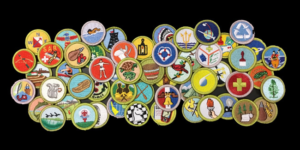The Power of Information
The Power of Information
When I was in University, we had a computer room on the top floor of the main building. Somewhere through the first year some students, for one reason or another, took over the computer room and threw all the data cards out the window to cascade down on the streets and be lost forever. That was all of the data for student records and other University data. Imagine that? How would you make out if all of your data was lost like that?
The problem, in my mind, is that there are very few in the parts and service business that would be able to tell you that their data is secured. Imagine that? Some of us have had to recreate systems that had checkpoint recovery. This is a system where all of the data on the system files are backed up at a check point. Perhaps every five minutes. When the system went down you had to try and recover the last transactions and re-enter them to the system.
How would you make out today if that happened to you? Let’s take a different turn and talk about the records for our customers. The name and address, the machine ownership, the calls, the likes and dislikes, and call history for instance. How are those records kept and secured? I will hazard a guess that your sales force knows about THEIR customers, but the Company not so much. Not a very good position to find yourself in at any time let alone today.
Marketing data is every bit as important as financial data or parts and service transactions yet we don’t do much about it at all. Instead we have executives and managers that do it all according to their experience and abilities. We have very powerful algorithms established to manage parts inventories and standard time and flat rating. Yet we do things for marketing, managing the equipment sales force and market coverage in a rather casual, this is the way it is done manner.
Someone once told me that the market leader does not want change. They have things under control. It is the businesses that are trying to grow that have to change the paradigm. They have the rattle the status quo. That couldn’t be truer nor more important to change than today.
We need to have better data to make good decisions is a common statement. I don’t agree with that at all. We need to have good data, that I agree with, however, we need to have good information to make good decisions not data.
What about our employees? What do you know about them? What kind of data do you keep on them? Of course, there is payroll history, and then there are letters in the file recording poor behavior, perhaps you have performance reviews. But what do you know about them? Your employees are the people that bind your customers to your business. Do you have enough of them to do the job you are asking them to do? You probably understand that personnel expense is the highest expense that you have and you try to keep it as low as possible. Even if it means that you over tax your employees.
What I am asking is very simple. What do you do with the information that you have to have to run your business?
- Is it secure?
- Can it be recreated?
- Do people control the planning and operation of your business based on their knowledge and experience? Or do they rely on data and statistics and information?
- Do you know as much about your customers as your sales team?
Please take this seriously as it is a serious situation. Please think about this. Your current and future success depends on it.
The Time is Now.

